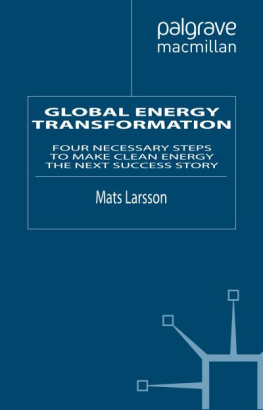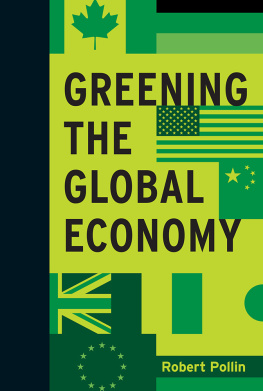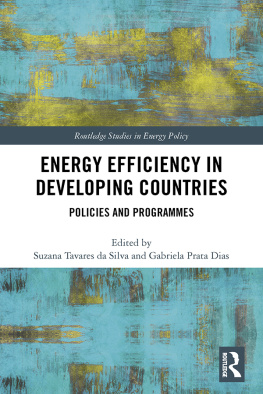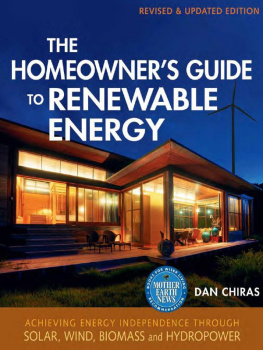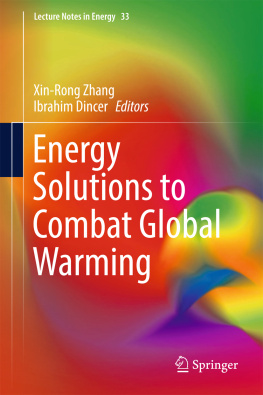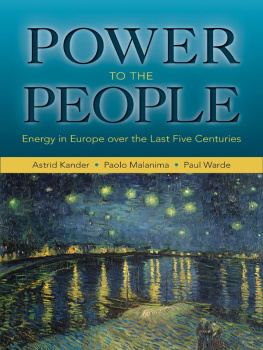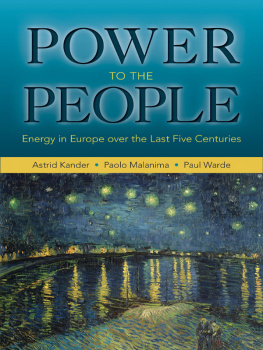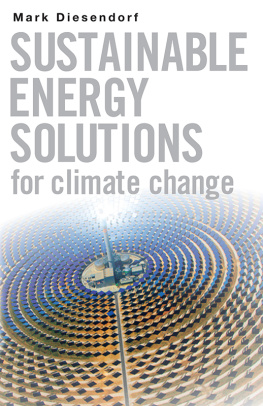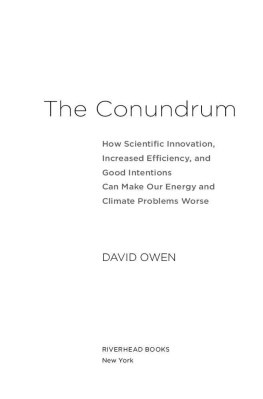GLOBAL ENERGY TRANSFORMATION
GLOBAL ENERGY TRANSFORMATION
FOUR NECESSARY STEPS
TO MAKE CLEAN ENERGY
THE NEXT SUCCESS STORY
Mats Larsson
Management Consultant


Mats Larsson 2009
All rights reserved. No reproduction, copy or transmission of this publication may be made without written permission.
No portion of this publication may be reproduced, copied or transmitted save with written permission or in accordance with the provisions of the Copyright, Designs and Patents Act 1988, or under the terms of any licence permitting limited copying issued by the Copyright Licensing Agency, Saffron House, 6-10 Kirby Street, London EC1N 8TS.
Any person who does any unauthorized act in relation to this publication may be liable to criminal prosecution and civil claims for damages.
The author has asserted his right to be identified as the author of this work in accordance with the Copyright, Designs and Patents Act 1988.
First published 2009 by
PALGRAVE MACMILLAN
Palgrave Macmillan in the UK is an imprint of Macmillan Publishers Limited, registered in England, company number 785998, of Houndmills, Basingstoke, Hampshire RG21 6XS.
Palgrave Macmillan in the US is a division of St Martins Press LLC, 175 Fifth Avenue, New York, NY 10010.
Palgrave Macmillan is the global academic imprint of the above companies and has companies and representatives throughout the world.
Palgrave and Macmillan are registered trademarks in the United States, the United Kingdom, Europe and other countries.
ISBN-13: 9780230229198
This book is printed on paper suitable for recycling and made from fully managed and sustained forest sources. Logging, pulping and manufacturing processes are expected to conform to the environmental regulations of the country of origin.
A catalogue record for this book is available from the British Library.
A catalog record for this book is available from the Library of Congress.
10 9 8 7 6 5 4 3 2 1
18 17 16 15 14 13 12 11 10 09
Printed and bound in Great Britain by
CPI Antony Rowe, Chippenham and Eastbourne
Dedication
To my wife Bodil and my daughters Cajsa and Maja with thanks for all their support through the writing of this and previous books.
Global Energy Transformation Institute, www.getinstitute.com
Contents
Acknowledgments
1 Executive Summary
Part I The Challenge
2 Who Should Read This Book and Why?
3 The Sustainability Challenge
4 Four Scenarios for the Future
5 Three Examples of Large-Scale Transformation Efforts from American Twentieth-Century History
6 Gradual Change Has Caused the Need for Energy Transformation
7 Thoughts on Planning and Market Economics
Part II Organizational Learning and Change Management
8 Two Levels of Control Executive Direction and Program and Project Management
9 Tools for Program and Project Executive Direction
10 The Standard Tools of Program and Project Management
11 Change Tools
12 New Tools for Learning and Analysis
13 Financial Tools
14 Change Happens in Steps
15 A Step Change Model for Energy
16 Change in Different Sectors of the Economy
Part III The Program Structure
17 The Transformation Program
18 Transforming Transportation
20 Transforming Industrial Processes
21 Transforming the Built Environment
22 Transforming Agriculture
23 Behavior and Work Life Change
24 The Program A Very Rough Outline
Conclusion
Notes
References
Index
Acknowledgments
I would like to thank my friend Stuart Pledger, who helped with the development of the idea for the book in the early stages and who also contributed to the climate change discussion and to the part on his method for collaborative problem solving, the Collaboration Caf. Thanks also to Julian Darley and Richard Heinberg of The Post Carbon Institute in California. The e-mail questions you asked during the writing of the book generated ideas such as the global embrace and added to my thoughts on organizational learning in society. Peter Wennstrm, whom I met by chance at Schiphol airport, enthusiastically contributed ideas for the title of the book. Mikael Edholm, at the Swedish Trade Council, contributed his extensive knowledge about prediction markets.
Thanks to Thomas Bjrkman, Johanna Moberg, Glenn Widerstrm and Urban Bergstrm at the Swedish Energy Agency for support in the development of ideas on energy improvement of supply chains. Thanks also to Hkan Knutsson and Per Simonsson at Sustainable Business Hub. Our discussions gave me the ideas that generated the part about communication of ideas that drive behavior change toward sustainability.
I also thank Hans Enocson, Nordic General Manager of GE, for generously giving his time and contributing information about the GE Ecomagination project. Similarly, Inge Horkeby, Director at Volvo AB, in a series of meetings over the past 2 years, explained to me the opportunities of energy transformation in the transportation sector.
Harry Frank, former Research Director at ABB and Professor at the Royal Swedish Academy of the Sciences, provided early insight in the need for leadership in the process of energy systems transformation. Many thanks also to Lennart Swanstrm, Senior Scientist at ABB, and Pontus Cerin, Assistant Professor at the Swedish Environmental Institute, for contributing their knowledge about life cycle analysis.
I wish to thank Eva Sthl, Fredrik Adolfsson and Thomas Bergmark, managers at IKEA, for the generous contributions of information about this company and its projects in the areas of energy and the environment.
Thanks to Bengt Gebert, Jenny Bramell, Kjell Persson, Curt Schrder, Ingela Bogren and sa Dahl for daily encouragement and support.
I am also grateful to the team at Palgrave Macmillan led by Stephen Rutt for their support and ideas.
CHAPTER 1
Executive Summary
1.1 BACKGROUND
The transformation of existing energy systems to sustainable and renewable alternatives represents a tremendous management challenge. We need to view it as an opportunity to renew energy systems and renew important parts of the economy and social life. In addition to this we may see it as an opportunity to create new business and, if we manage the process well, we may also see it as an opportunity to create new economic growth. The magnitude and complexity of this challenge has not been widely recognized. So far, primarily the technical aspects of different alternatives have been debated. We know a lot about what has to change. So far, however, very little has been written about the how of the change process.
We have access to a number of renewable technologies that are currently available on a small scale, but few of those are available on a large scale. In most cases available technologies need to be improved or new technologies need to be developed, production resources for technologies, products and fuels need to be expanded and we also need to expand the knowledge base in terms of the number of people who have competence in both the areas of technology and change management during the transformation. The speed of all activities related to this change needs to be increased.
Next page
